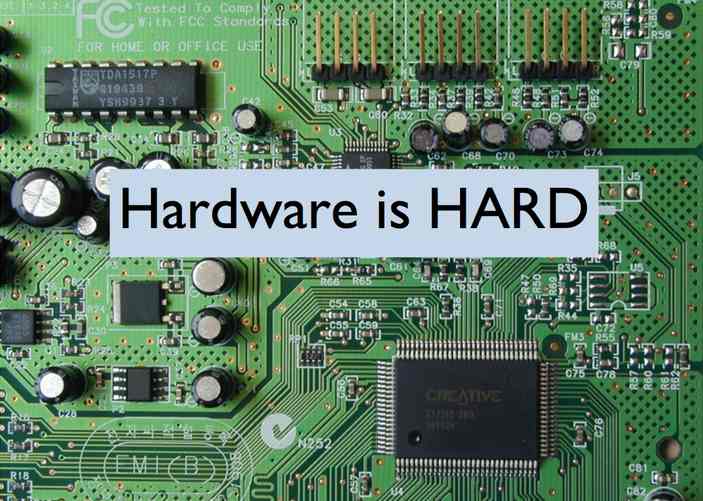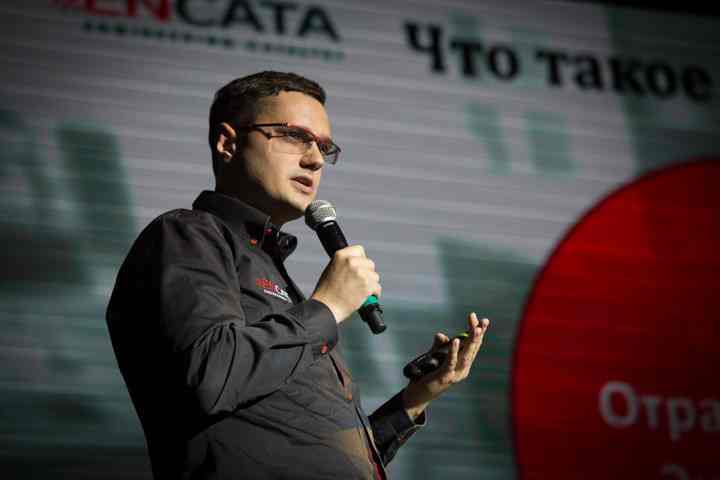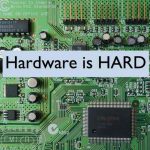Hardware is Hard: The Role of Hardware in The Modern World

This is a guest post by Oleg Kondrashov, the CEO of EnCata, about the role of hardware in the modern world. You can reach him at EnCata.net
Our world and world’s inhabitants are extremely amusing. Every few decades, we face a generation gap. Yesterday elderly couples condemned promiscuity and the global spread of drugs among young people. When the youth rushed into insane trips, imitating Kerouac and other beatniks. They lived in a very real world, a world that gave them pleasure. Nevertheless this world was changing rapidly and even Cicerone’s cries of the elder generation haven’t been able to stop it. Some tried to resist this and some made fortune off of it. Many companies and inventors have perfectly caught the flow of the youth: Volkswagen gave them freedom of movement and a place for promiscuity, Hofmann gave them freedom of consciousness, Hendrix spiced it up with amazing guitar reefs.
Today we are concerned about the immersion of the younger generation in the virtual world. Ironically, we don’t forget to mention it anywhere, including the Internet itself. Parents urge society to come to their senses and draw children out of this virtual slavery, restrict communication with devices and in every possible way prevent the child’s reunion with virtuality. Will they be able to stop the world that is giving real pleasure to modern youth?
It is difficult to blame modern generation for choosing a better life. Unfortunately, the best life is the life in the virtual world. And don’t even try to argue with that. A world where war is just a game that brings joy instead of grief to thousands of families; a world where hunger can be defeated by a little donate; a world where everyone can be anyone without being discriminated against on racial or gender grounds – this is the world that we have been trying to reach for thousands of years. That’s why instead of listening to politicians and their argumentations about Jerusalem and terrorist attacks in Europe, I’m just looking for WI-FI.
However, despite the obvious progress in technology, we didn’t go that mad – we didn’t lose our heritage, despite Bradbury’s predictions, but we didn’t reach Azimov’s goals as well. Nowadays we are occupied not only by philosophical discussions – now we create a completely new reality. Thousands of services created by the minds of the most talented developers, simplify our lives, bring us home, deliver the purchases directly to our house, control our dogs and watch our heartbeat not to let us die from such happiness. But how much does the virtual world cost? How much do all these applications, all kinds of software and even Google’s top ranking place cost?
To tell the truth, absolutely nothing. Even the most popular search engine or the most indispensable IoT software is useless without a real, hardware device, which will become a guide to the best world of technology. The only problem is that we stopped paying attention to hardware startups. Startupers (even though they are very outstanding developers) with a gaming laptop, rented office in a prestigious area and a small “ego trip”, often consider the hardware component of any project to be secondary. I want to argue with them by making two simple lists that describe and compare the most important components in Software and Hardware start-ups:
Software startup
- Idea: For some Software startups, an idea can be formed right up to the MVP release. This is absolutely OK for Software – any team can afford a few pivots.
- Team: Talented startupers sometimes lead their project even without a team. In addition, the abundance of developers and the geography of their locations are really diverse now. Let’s Look beyond the States and Silicon Valley and take a notice that, for example, in India, developers are as skillful. But cheaper.
- Several MacBooks: Not only Macbooks. Save some money – Asus also can be a good choice.
- Office: Preferably located in the downtown. Although you can confine yourself to any room with access to the network.
- Investments: Business angels and funds are actively investing in Software startups. Conferences, meetups, hackathons, where you can show your MVP, are held in any part of the world monthly, weekly, daily. Also several thousands dollars may be enough to enter the mass market for the majority of software startups.
Hardware startup
- Idea: The idea must be thoroughly developed by the hardware startup. Each pivot on the long journey to the final product can result in losses of tens, or even hundreds of thousands dollars.
- Technology: Technology is the foundation of a hardware startup. Not all the projects can offer breakthrough inventions. Moreover, a technology must necessarily be efficient. New products based on technologies allow startup to create value for consumers, earn a decent added value and recoup the invested funds.
- Equipment: On the way to the MVP hardware project will need ordinary equipment, which can be installed in a home garage, however, investments in hardware will accurately exceed the cost of several MacBooks.
- Team: In a typical hardware-startup, the team must consist of: an engineer and an entrepreneur (CEO) who assumes managerial functions in addition to scientist who developed the technology. It is also crucial to have an engineer in a founding team as a CTO / product owner. The positions of qualified engineers, for example, will require much more careful selection and expenses. To cope with such project alone is almost impossible.
- Professional equipment: After achieving the MVP stage, startup requires a huge amount of professional equipment to create a pre-production prototype and conduct field tests. Nowadays, a very small percentage of accelerators provide such services. Large enterprises also won’t take up a small batch of trial prototypes and certainly won’t help in creating the final product.
- Investments: No one is ready to invest in a pure idea. At this stage of project’s development, technology will be interesting only to desperate business angels with industry expertise. Professional funds (Sequoia Capital, Baseline Ventures, Lowercase Capital, Hackspace Capital and others) will review a project only at the seed stage when there’s already a prototype ready for pilot batch production. But these funds are even more eager to invest when money is needed for commercialization and market entry, i.e. marketing and sales launch. In general, investments in hardware startups can reach several million dollars.
- Mass production and entry to the market: Final product creation requires much more than a million dollars of investment and a partnership with a large company, fund or accelerator. Even with a serious marketing support, product will appear on the market much later than any of Software applications.
- Time: Time is a very important component for hardware projects. Any startup team burns out within the first 6 months. These terms are especially important for hardware, because the project can last several years. Team-building during this period is not an easy task as well.
Such lists are also extremely amusing – sometimes hyperbolic, sometimes far-fetched, sometimes even not quite fair. But all in all IT community should finally admit that future IoT devices (smart column with a ridiculous female name or pet leash with feedback) must be really high-quality, not one-time products. So, this task is many times more complicated in the world of burning Teslas and Bieber’s songs
Oleg Kondrashov is the CEO of EnCata and CTO at Hackspace Capital. You can reach him at EnCata.net


